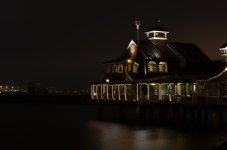You are using an out of date browser. It may not display this or other websites correctly.
You should upgrade or use an alternative browser.
You should upgrade or use an alternative browser.
D3100 help with night time pictures
- Thread starter hksecrist
- Start date
Somersetscott
Senior Member
a tripod (or a flat surface), slow shutter speed, higher ISO - in what moderation? Well! it is all dependant on how much light is present.
What exactly are you trying to shoot? - how much light examples: Car in a carpark with street lighting, Star gazing no aftificial light, buildings with lights on.. etc etc..
also your camera lens(es) etc
If this information is given you'll get better information and the result you require
There is always an element of trial and error
What exactly are you trying to shoot? - how much light examples: Car in a carpark with street lighting, Star gazing no aftificial light, buildings with lights on.. etc etc..
also your camera lens(es) etc
If this information is given you'll get better information and the result you require
There is always an element of trial and error
Somersetscott
Senior Member
PS, good to post failure, progression and successful photos and the camera settings for the photo if possible - the members here can offer some awesome advice on improvements. 
Don Kuykendall_RIP
RIP :(
Welcome to the forum
If you fill out your profile we can better answer any questions that you might have.
You can do that at http://nikonites.com/profile.php?do=editprofile
Some useful links
http://support.nikonusa.com/app/ans.../nikon-product-manuals-available-for-download
Nikon | Imaging Products | Digitutor
Thanks
Post a picture. Tell us exactly what you are getting now and what you WANT to get.
First off shoot in RAW if yoiu have the post processing program to handle it.
If you fill out your profile we can better answer any questions that you might have.
You can do that at http://nikonites.com/profile.php?do=editprofile
Some useful links
http://support.nikonusa.com/app/ans.../nikon-product-manuals-available-for-download
Nikon | Imaging Products | Digitutor
Thanks
Post a picture. Tell us exactly what you are getting now and what you WANT to get.
First off shoot in RAW if yoiu have the post processing program to handle it.
WileyCoyote
Banned
Welcome to Nikonites. I was fooling around this morning after getting off work and while waiting for the sun to rise I shot this at these settings, just experimenting. This was taken about 10 minutes before the sun actually rose.
Nikon D90 camera
Manual Mode
ISO-200
f/22
1 second exposure handheld w/elbows braced on a rail
with my 18-105mm lens @ 18mm

Nikon D90 camera
Manual Mode
ISO-200
f/22
1 second exposure handheld w/elbows braced on a rail
with my 18-105mm lens @ 18mm
Last edited:
Horoscope Fish
Senior Member
First off, night photography rocks! It's definitely my favorite time to shoot. There's just something magical looking in a good night-shot. That being said, there is no "recipe" for this; you just have to work with what you have and be willing to experiment. Bear in mind using auto-focus may be difficult, or impossible, depending on what you're shooting and how much light there is to work with.New to D3100 and need to know the recipe for night time pictures outdoors. I have tried the night setting and played with some of the white exposures, ISO etc. I am brand new at using a good camera and clueless......
Just as an example the shot below was shot at f/16 for 20 seconds using ISO 100. This isn't a particularly GOOD shot, it's just an example to give you some idea of where to start with exposure. I prefer to use as low an ISO as possible to keep the image sharp and noise free but that's my guideline and certainly not a "rule" of any kind. I don't mind doing exposures longer than 30 seconds but rarely find them necessary unless I'm blurring some kind of motion. For whatever reason, f/16 is a real sweet spot for me when doing night photography but again, that's me and my camera; that's not any kind of "rule" you need to adhere to. It does provide a fairly deep depth of field so that helps when focus is difficult.
I would suggest you use your camera's meter (set it to "A" (Aperture priority)) and adjust your aperture until you see a reasonable shutter speed in your viewfinder, something in the 15-30 second range should be good for a start. Whatever setting you find working for you, start correlating in your head what shutter speed, aperture and ISO you're using then switch to "M" (Manual mode) and start setting up your shots based on your experience, adding or reducing exposure time based on your results. Depending on aperture, a small adjustment can have a big impact so experiment away. You'll be amazed how quickly you'll start getting great shots in full Manual.
You're definitely going to need a tripod and a remote release. You *can* use the self-timer on your camera to prevent camera shake while pressing the shutter but trust me when I tell you the wireless remote release is something you're going to want if you plan on doing a lot of long exposure/night photography, fortunately they're cheap. Tripods are a whole 'nother matter but you're absolutely going to need one.
Attachments
Last edited:

